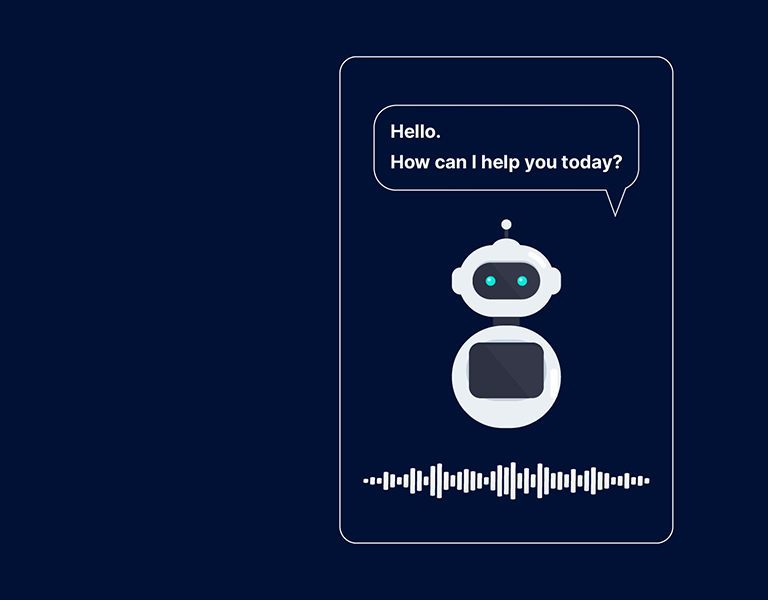Due to the pandemic, businesses were forced to adapt to new norms with disruptions to usual business operations. The sudden boom in e-commerce has created new requirements. Certain products and services were in high demand, and some businesses struggled with staggering volumes of customer queries and complaints.
According to Drift, since 2019, frustrations with unresponsive brands on social or email grew 5.7x. (2020 State of Conversational Marketing)
Against this backdrop, chatbots have become a necessary component in delivering a positive online buying experience.
Chatbots are an automated service that facilitates communication with end-users via text or voice-to-text and text-to-voice using different mediums such as website, Facebook Messenger, Google Voice assistance and the like.
By 2023, 2.5 billion hours will be saved by both businesses and consumers through chatbots (Juniper Research).
A sales chatbot helps customers on the purchasing journey, following processes and answering questions in real-time. Chatbots offer varied services for industries ranging from tourism, education, food, energy, healthcare, and more, from sales reservations to handling shipment delays and customer complaints.
Chatbots can be structured by hardcoded questions, and answers while the more advanced AI-based chatbots use machine learning and training. It involves Natural Language Processing (NLP) to process and analyze large amounts of natural language data.
Why integrate chatbots into your ERP?
Intelligent chatbots enable rapid access to enterprise data. ERPs are static applications that contain massive amounts of unstructured data. Chatbots can process unstructured data and simplify information exchange when integrated with ERPs, exponentially increasing the end-user experience.
Easy access to information
Though ERP systems have best-laid strategies for business users, the complex user interfaces have done little to improve productivity, even for experienced users. ERP users spend a considerable amount of time navigating the system, switching from one window to the next to do day-to-day tasks, and across multiple dashboards to access important data.
Instead, how simple would it be if you could direct a question to the chatbot, and it could give you the answer right away? To improve the user experience of an ERP, make better decisions quicker, you can integrate an AI-Powered chatbot. The chatbot will process the user query and pass the information back to the user. Thus, it will eliminate the user traversing through complex UIs.
Improve employee productivity
Let chatbots handle those day-to-day repetitive tasks that usually cause lethargy and are more prone to human error. For example, employees spend valuable time on data entry, processing customer orders, updating price lists, and so on. While this information is essential for daily business operations, automating these tasks will free up employee time to attend to more productive tasks.
Streamline business processes to make internal tasks more efficient
Chatbots can manage calendars, find documents, and even make it easier to manage assets, such as social media. The functions that a chatbot can perform to streamline and speed up internal processes are many. For example, the HR department can use chatbots from recruitment to onboarding new employees and handling internal requests. In addition, chatbots are known to speed up payment processes, identify inventory discrepancies, improve supply chain visibility, and reduce manual data tracking are just a few examples of instances where chatbots can help streamline operations.
Enhance customer experience
Marketing teams spend an extensive amount of time answering simple questions such as “Where’s my order?”, “Where’s your store” and “What time does the store open.” Moreover, customers expect instant responses to these questions. You can train your chatbot on your product lineup and common customer queries, enabling a virtual assistant to make product recommendations and even solve customer queries 24×7.
Most ERPs are designed to process structured data and static rules. In addition, ERPs collect and store data centrally for wide distribution. Today, businesses generate volumes of unstructured data in emails, images, audio and video files, documents, social media data and the like. By integrating an AI-Powered chatbot with Natural Language Processing, Image and Video Processing and Audio Analysis, you can enhance the capabilities of an ERP. The chatbot will also have the capacity to learn from past interactions and become intelligent and smarter over time. As a result, you will have rapid access to your business data and be able to automate many tasks quickly. This will do wonders for the performance and user experience of the ERP.
Get in touch with our chatbot experts to learn more.
Written by:
Kolitha Gunarathne
Senior Solutions Architect, Fortude
Related Blogs
Subscribe to our blog to know all the things we do


